Do you suffer from a strained calf muscle? If so, you know the pain that can come with it. Massaging a calf strain can help alleviate the pain, reduce inflammation, and promote recovery. In this article, we will provide a step-by-step guide on how to massage a calf strain for relief and recovery. We’ll discuss the most effective massage techniques and provide tips for self-massage, as well as when to seek professional help. So, if you’re looking to learn how to massage a calf strain, read on!
Contents
Causes of Calf Strain
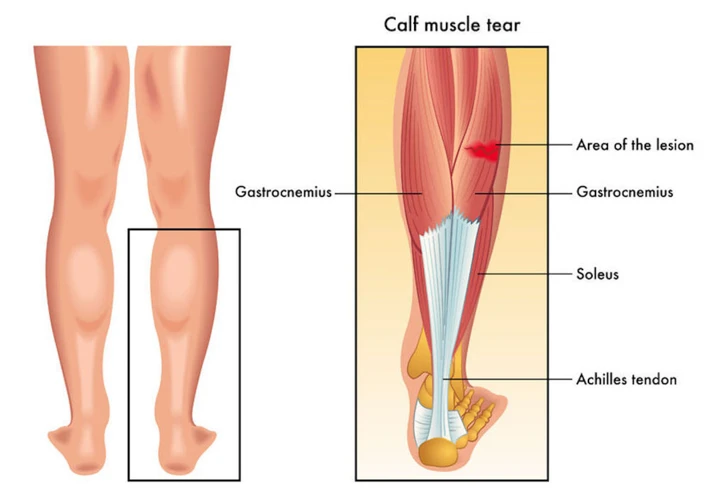
Calf strain, also known as a torn calf muscle, usually occurs due to a sudden, forceful contraction of the calf muscle. This type of strain is common in athletes, particularly those who participate in sports involving running or jumping. Other causes of calf strain include:
- Overstretching: Muscles are usually stretched during exercise and can become overstretched if they are not allowed to rest and recover properly. This can lead to a tear of the muscle fibers.
- Lack of Warm-Up: Not warming up before physical activity can lead to strains and injuries, including calf strain.
- Muscle Fatigue: Exercising for too long or too hard can cause the calf muscle to become fatigued, leading to a tear.
- Direct Trauma: A direct blow to the calf can cause a strain, such as when the leg is hit with a heavy object.
No matter the cause, calf strain can be very painful and can limit your ability to move and exercise. Learning how to massage a torn calf muscle can help reduce pain, improve mobility, and speed up the recovery process.
Signs and Symptoms of Calf Strain
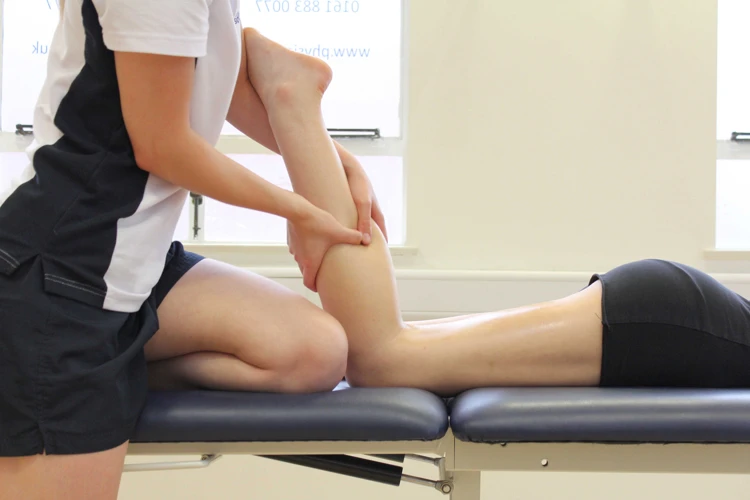
Calf strain is a common athletic injury caused by stretching or tearing the muscles and tendons of the calf. Symptoms of a calf strain typically include:
- Pain: Pain in the back of the calf that increases when the muscle is stretched or contracted.
- Swelling: Swelling and tenderness in the calf.
- Bruising: Bruising in the calf that appears a few days after the injury.
- Weakness: Weakness and instability in the calf that can affect balance and mobility.
- Stiffness: Stiffness in the calf that can make it difficult to move the ankle and foot.
If you experience any of these signs or symptoms, you should seek medical attention to ensure that you are properly diagnosed and treated. Massage is a great way to reduce pain, improve flexibility, and promote healing in a strained calf muscle.
Safety Considerations
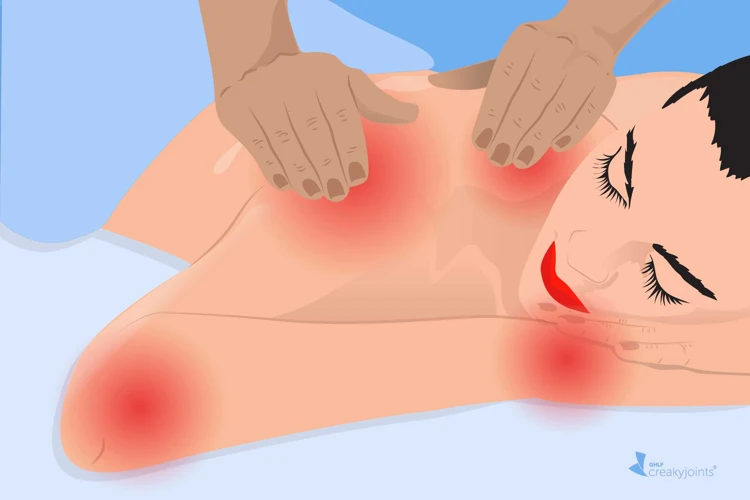
Before massaging a calf strain, it is essential to check the area for signs of infection or inflammation. Massaging an injured area that is infected can cause further damage and should be avoided. Additionally, the pressure applied during massage should remain within the patient’s pain threshold. If the massage causes too much pain, stop immediately and seek medical advice. If the patient has a medical condition, it is important to consult with a doctor before beginning massage as it may not be suitable for some conditions.
Preparing to Massage a Calf Strain
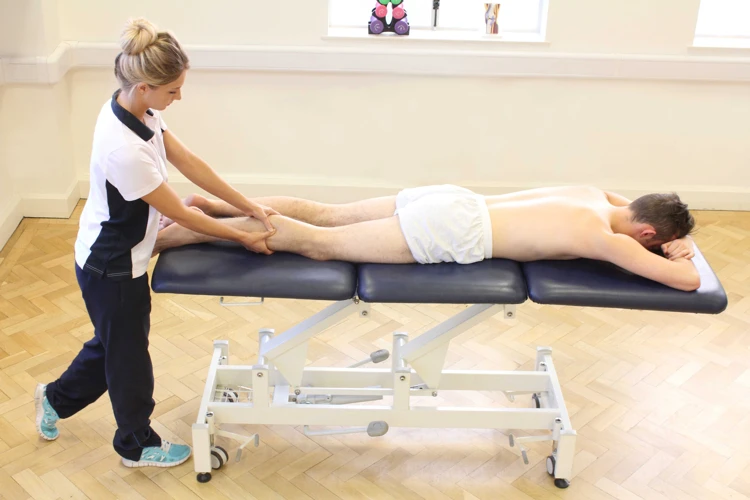
| Step | Description |
| 1 | Prepare the area by applying heat or cold, depending on the severity of the strain. Heat is a better option for relieving pain and increasing circulation. Cold reduces inflammation and relieves pain. |
| 2 | Gently massage the calf to warm up the area before proceeding with more intense massage techniques. Use light circular motions with your fingertips, increasing or decreasing pressure as needed. |
| 3 | Apply massage oil or lotion to your hands and the calf muscle. This will help reduce friction and make it easier to massage the area. |
| 4 | Be sure to keep your hands and fingers relaxed to ensure a more comfortable massage for the client. |
| 5 | Check for any areas of tenderness, swelling, or stiffness and apply more pressure to these areas to help loosen tight muscles. |
| 6 | Start the massage with gentle strokes, gradually increasing pressure as the muscles warm up. |
Step-by-Step Guide to Massaging a Calf Muscle Strain
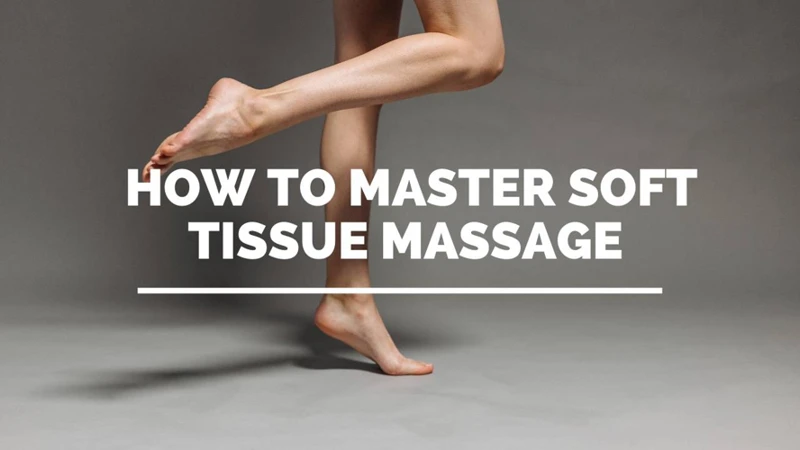
| Step | Instructions |
|---|---|
| 1 | Sit in a chair and place one foot on the opposite knee. This will give you better access to the calf muscle. |
| 2 | Using your thumb, press firmly into the calf muscle and massage in a circular motion. |
| 3 | Continue to massage in a circular motion, gradually increasing the pressure as needed. |
| 4 | Once you have found a comfortable pressure, move your thumb up and down the calf muscle in long, slow strokes. |
| 5 | Continue to massage in this manner for several minutes. |
| 6 | Repeat the massage on the other calf muscle. |
After completing the massage, be sure to stretch the calf muscles to further help with relief and recovery.
Massage Techniques for Calf Strains
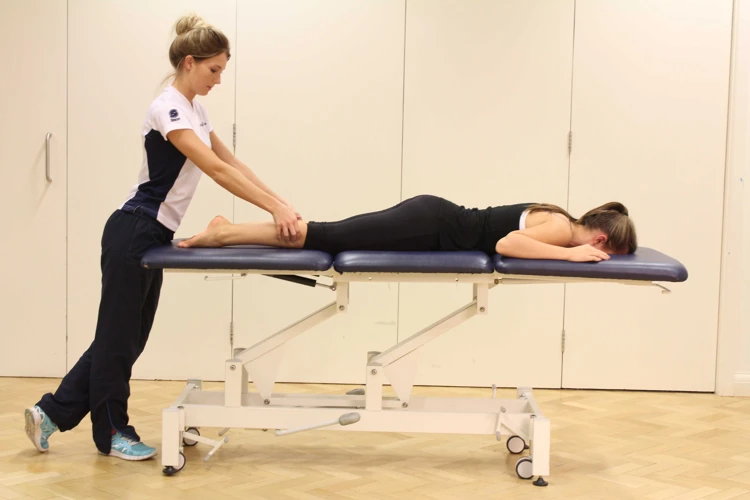
Effleurage: Begin with a gentle stroking motion with the palms of your hands to warm up the muscle and increase circulation.
Petrissage: Apply a kneading motion to the calf muscle with your thumbs and fingers, working out the knots and tension in the muscle.
Friction: Move your hands in a circular motion, pressing deeply into the muscle to help break down scar tissue and adhesions.
Tapotement: Use your hands or a massage tool to tap the calf muscle. This helps to stimulate the muscle and promote blood flow.
Cross-Fiber Friction: Use your thumbs to apply deep pressure to the calf muscle in a perpendicular direction. This helps to break down scar tissue and restore mobility.
Trigger Point Release: Apply pressure to specific points in the muscle to help release tension and relieve pain.
Compression: Wrap the calf with a bandage or an elastic wrap to help reduce swelling and stabilize the muscle.
Self-Care Practices for Calf Strain
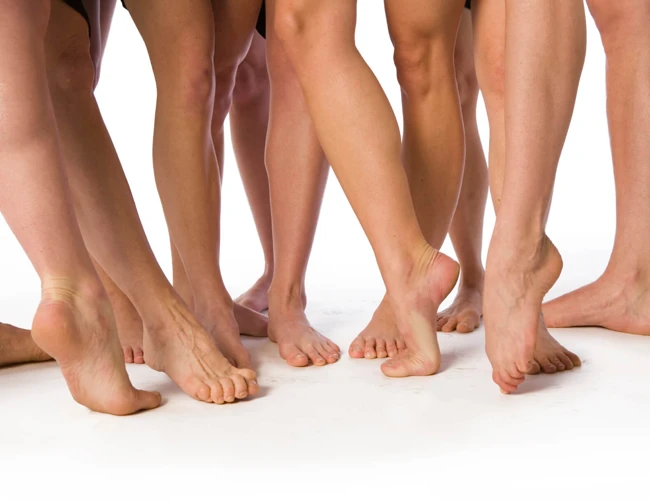
Calf strain is an injury that affects the muscles and tendons in the back of the lower leg, often caused by overstretching. To treat the injury, it is important to follow a self-care routine that includes rest, ice, compression and elevation. Additionally, it is important to perform gentle, low-impact exercises to help restore flexibility and strength in the calf muscles.
Rest
One of the most important components of treating a calf strain is rest. It is important to give the calf muscle time to heal, so it is best to avoid activities that involve running, jumping or other high-impact activities. Additionally, it is important to give the calf muscle time to rest and recover by avoiding activities that involve stretching or overuse.
Ice
Applying ice to the affected area can help reduce inflammation and swelling. It is important to use cold therapy for no more than 20 minutes at a time, and to use a cloth between the ice and the skin to avoid freezing. Additionally, it is important to avoid direct contact with the ice to avoid frostbite.
Compression
Compression can help reduce pain and swelling by providing support to the calf muscle. It is important to use a compression wrap or bandage that fits snugly on the calf muscle, but not too tightly. Additionally, it is important to make sure that the bandage is not too tight to avoid cutting off circulation.
Elevation
Elevation can help reduce swelling and inflammation by helping the blood flow away from the affected area. It is important to keep the calf muscle elevated above the level of the heart while the injury is healing. Additionally, it is important to keep the leg stationary while elevating, to avoid exacerbating the injury.
Exercise
Once the pain and swelling have subsided, it is important to begin performing gentle, low-impact exercises to help restore flexibility and strength in the calf muscles. Exercises such as walking, cycling, swimming and stretching can help improve the range of motion in the calf muscle. Additionally, it is important to perform these exercises slowly and with caution to avoid further injury.
Professional Treatment Options for Calf Strain
Physical Therapy: Physical therapy is a great way to help reduce the healing time and manage symptoms of a calf strain. A physical therapist can provide stretching, strengthening, and other exercises to help reduce inflammation, improve range of motion, and restore strength to the area. It may also be beneficial to use ice, heat, ultrasound, and electrical stimulation for additional pain relief.
Corticosteroid Injections: Corticosteroid injections can be used to reduce inflammation and provide pain relief in cases of severe calf strain. These injections should only be administered by a trained healthcare professional and should be used in conjunction with other treatments such as physical therapy.
Surgery: Surgery may be recommended in cases of severe calf strain that do not respond to other treatments. Surgery is usually only recommended if there is a tear in the muscle or tendon. The type of surgery used to treat a calf strain will depend on the severity of the injury and the amount of damage.
Massage: Massage can be used to reduce inflammation and promote blood flow to the affected area. Massage can also help reduce muscle tension and improve range of motion. It is important to use caution when massaging a calf strain as too much pressure can cause further damage.
Rest: Rest is an important part of recovery from a calf strain. It is important to avoid activities that put strain on the area until it has had a chance to heal. This may include avoiding running, jumping, or other strenuous activities. It is also important to make sure to get adequate sleep and to limit the amount of weight being put on the affected area.
Compression: Compression can be used to reduce swelling and provide additional pain relief. Compression can be applied in the form of a compression bandage or a compression sleeve.
Bracing: Bracing can be used to provide extra support to the calf muscle and limit movement in the area. Bracing can be beneficial in cases of severe calf strain and should be used in combination with other treatments.
These are some of the most common professional treatment options for calf strain. It is important to check with a healthcare professional before beginning any treatment plan.
Frequently Asked Questions
What are the Benefits of Calf Massage for a Strain?
- Reduces Pain: Massaging the calf muscles can help to reduce pain associated with a strain.
- Increases Circulation: Massaging the calf muscles helps to stimulate circulation, aiding in the healing process.
- Improves Flexibility: Massaging the calf muscles can help to improve flexibility and range of motion.
- Promotes Relaxation: Calf massage can help to relieve stress and tension, promoting relaxation.
- Reduces Swelling: Massaging the calf muscles can help to reduce swelling and inflammation associated with a strain.
How often should I massage my calf for a strain?
- During the first 48 hours: Massage your calf strain every 2 hours, with at least 10 minutes of massage each time.
- The next two weeks: Massage your calf strain every day, with at least 10 minutes of massage each time.
- After two weeks: Massage your calf strain every other day, with at least 10 minutes of massage each time.
By massaging your calf strain regularly, you will help promote blood flow and healing in the affected area. This can help reduce pain and swelling, and can help you avoid further injury and pain.
Is there any risk of further injury from calf massage?
Calf massage can be a beneficial part of recovery from calf strain, however it is important to ensure that it is done correctly and safely. Incorrect massage techniques can cause further injury to the strained muscle, so it is important to be aware of the risks and to be careful with massage pressure and technique. If the massage causes any pain or discomfort, it is best to stop and contact a doctor or therapist for advice.
How do I know if the massage I am giving is too intense?
- Check for pain: If you feel pain while giving the massage, then it is too intense.
- Check for tenderness: If your partner is feeling tenderness during the massage, then it is too intense.
- Check for muscle tension: If your partner’s calf muscle is feeling tense, then it is too intense.
- Check for discomfort: If your partner is feeling uncomfortable during the massage, then it is too intense.
If any of these signs are present, reduce the pressure and intensity of the massage.
What are the Best Techniques for Calf Massage?
Friction Massage: A friction massage is a deep technique that targets the deeper layers of the muscle tissue. This technique helps to warm-up the tissue and improve circulation. It is best to apply the friction massage in a circular motion with your thumb or fingertips.
Stretching: Stretching the calf muscles can help to reduce tightness and improve flexibility. It can also aid recovery and reduce the risk of further injury. To stretch the calf, stand with your feet hip-width apart and pull your toes up towards your shin until you feel a gentle stretch in the calf. Hold the stretch for 15-30 seconds.
Trigger Point Massage: Trigger points are tight areas of muscle tissue that can cause pain and tightness. To target trigger points, use your fingers to apply pressure in a circular motion for 10-15 seconds. You can also use a tennis ball to apply pressure to the trigger points.
Compression Massage: Compression massage is a technique that helps to reduce swelling and inflammation. To do a compression massage, use your fingers to apply pressure in a circular motion for 10-15 seconds. You can also use a foam roller for a deeper massage.
Conclusion
To effectively massage a calf strain, use a combination of effleurage, petrissage, and cross-fiber friction techniques. Always focus on the affected muscles and ensure that the pressure is comfortable. It’s best to seek medical advice if the injury is severe or if the pain persists. With regular massage, the calf strain can be relieved and the muscle can recover quickly.

